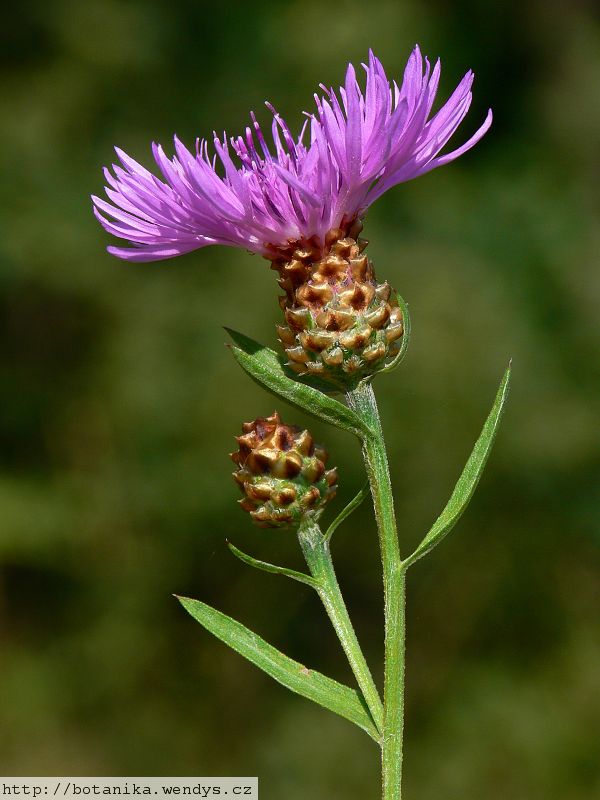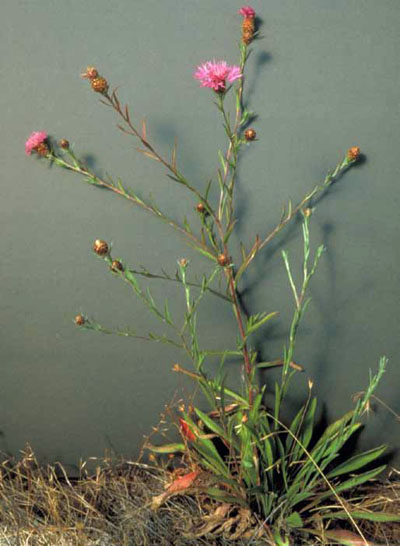Brown Knapweed: The Invasive Weed That's Taking Over
Brown Knapweed: The Invasive Weed That's Taking Over
Brown knapweed is a perennial plant that is native to Europe. It was introduced to North America in the early 1800s and has since become an invasive species in many parts of the continent. Brown knapweed is a serious problem because it can outcompete native plants, reduce biodiversity, and degrade rangeland and other habitats.
What is Brown Knapweed?
Brown knapweed is a tall, upright plant that can grow up to 3 feet tall. It has a woody root crown and blue-green leaves that are lance-shaped or egg-shaped. The flowers are rose-purple to purple and bloom from July to September. Brown knapweed reproduces by seed and by vegetative means.
Where Does Brown Knapweed Grow?
Brown knapweed is found in a variety of habitats, including pastures, meadows, roadsides, and disturbed areas. It prefers moist, well-drained soils and full sun. Brown knapweed is most common in the western and northeastern United States, but it has also been found in other parts of the country.
Why Is Brown Knapweed Invasive?
Brown knapweed is invasive because it is a highly competitive plant. It can outcompete native plants for water, nutrients, and sunlight. Brown knapweed also produces a chemical that inhibits the growth of other plants. In addition, brown knapweed can produce a large number of seeds, which can be easily spread by wind and water.
The Impacts of Brown Knapweed
Brown knapweed has a number of negative impacts on the environment. It can reduce biodiversity by crowding out native plants. It can also degrade rangeland and other habitats by decreasing forage production and increasing soil erosion. Brown knapweed can also be a fire hazard. The plant's tall, dry stalks can easily catch fire, and the fires can spread quickly.
How to Control Brown Knapweed
There are a number of ways to control brown knapweed. One method is to pull or dig up the plants by hand. This is a good option for small infestations. However, it is important to remove the entire root system, as any remaining roots can resprout.
Another method of control is to use herbicides. There are a number of herbicides that are effective against brown knapweed. However, it is important to use herbicides carefully, as they can also harm native plants.
Biological control is another option for controlling brown knapweed. There are a number of insects and other organisms that feed on brown knapweed. These organisms can be released into the environment to help control the spread of the plant.
Conclusion
Brown knapweed is a serious invasive weed that can have a number of negative impacts on the environment. There are a number of ways to control brown knapweed, but it is important to choose a method that is effective and safe for the environment.
Brown knapweed is an invasive plant that can be found in many parts of the world. It is a tall, leafy plant with purple flowers. Brown knapweed is a serious threat to native plant communities, and it can also be harmful to livestock.
If you are interested in learning more about brown knapweed, I recommend visiting the website Garden Wiki. This website provides a wealth of information about the plant, including its identification, biology, and control.
The website also includes a number of resources that can help you get involved in the fight against brown knapweed. For example, you can find information on how to identify and remove the plant, and you can also learn about volunteer opportunities.
I encourage you to visit the website Garden Wiki today to learn more about brown knapweed and how you can help to protect your local environment.
FAQ of brown knapweed
Question 1: What is brown knapweed?
- Answer: Brown knapweed is a perennial weed that is native to Europe and Asia. It is a member of the daisy family and has distinctive purple or pink flowers. Brown knapweed is an invasive species in many parts of the world, including North America, Australia, and New Zealand. It is a serious problem because it can displace native plants, reduce livestock forage, and contaminate hay.
Question 2: What are the characteristics of brown knapweed?
- Answer: Brown knapweed is a tall, upright plant that can grow up to 4 feet tall. It has multiple reddish stems and leaves that are egg-shaped or lance-shaped. The flowers are clustered together in small, composite flower heads. The flowers are typically pink or purple, but they can sometimes be white.
Question 3: How does brown knapweed spread?
- Answer: Brown knapweed spreads by seed and by underground rhizomes. The seeds are dispersed by wind and water, and the rhizomes can spread by as much as 10 feet per year.
Question 4: How can I control brown knapweed?
Answer: There are a number of ways to control brown knapweed, including:
- Hand pulling: This is the most effective way to control brown knapweed, but it is also the most labor-intensive.
- Mowing: Mowing can help to suppress brown knapweed, but it is not a permanent solution.
- Chemical control: There are a number of herbicides that can be used to control brown knapweed. However, it is important to use herbicides carefully to avoid harming other plants.
- Biocontrol: Biocontrol agents, such as insects and fungi, can be used to control brown knapweed. However, biocontrol agents can be slow-acting, so they are not always effective.
Question 5: What are the risks of brown knapweed?
Answer: Brown knapweed poses a number of risks, including:
- Displacement of native plants: Brown knapweed can displace native plants, which can disrupt ecosystems.
- Reduced livestock forage: Brown knapweed can reduce livestock forage, which can impact the health of livestock.
- Hay contamination: Brown knapweed can contaminate hay, which can make animals sick.
- Allergic reactions: The sap of brown knapweed can cause allergic reactions in some people.
Image of brown knapweed
5 different images of "brown knapweed" from Pinterest:
- Image 1: A close-up of a brown knapweed flower, with its distinctive purple petals and yellow center.

- Image 2: A field of brown knapweed in full bloom, with the flowers swaying in the breeze.
- Image 3: A brown knapweed plant, with its leaves and stems covered in tiny hairs.

- Image 4: A brown knapweed seed head, with its feathery pappus that helps the seeds to disperse.

- Image 5: A brown knapweed in its native habitat, a meadow or field.

Post a Comment for "Brown Knapweed: The Invasive Weed That's Taking Over"